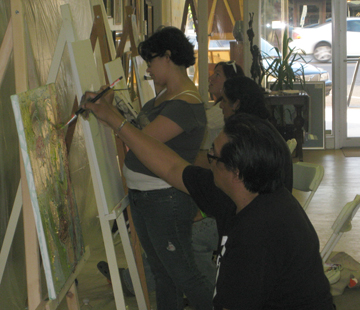 |
| Live paint at Standing Buffalo Gallery, Norman, OK |
Introducing First American Art Magazine, a publication dedicated to covering the art of Indigenous peoples of the Americas—north and south. America Meredith (Cherokee Nation), a working artist, edits this magazine due of the clear need for critical, in-depth analysis of Indigenous American art, written in a way that is accessible to the general public—to both Native and non-Native communities.
FAAM will profile artists, both established and emerging. The magazine will feature art show and art book reviews by Indigenous writers. Features will cover current issues in Native artists, new discoveries in Indigenous art history, and profiles of Native arts communities—rural and urban. We’ll also showcase graphic arts, literature, news, and editorials.
Our introductory issue #0 will be published in the Spring in print and online. Issue #1 will come out this August. Our website, www.firstamericanartmagazine.com, is up and has a calendar of events and calls for entries. Our blog, at firstamericanart.blogspot.com will share news, opinions, and art profiles. Through print and the web, First American Art Magazine will connect different communities—bridging the gap between academia and the general public and Native and non-Native art worlds. We will provide a platform for honest, open dialogue and in-depth analysis. FAAM will discuss the human condition through the lens of Indigenous art.

